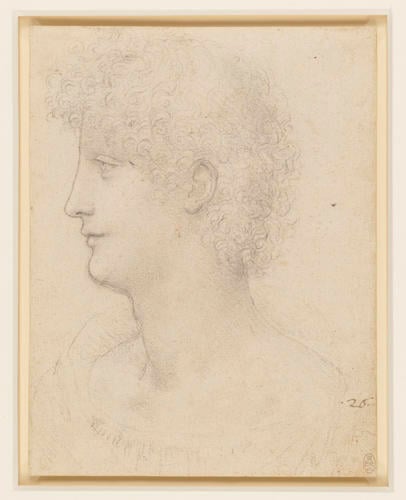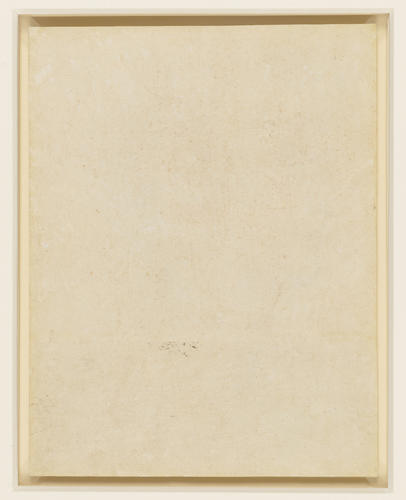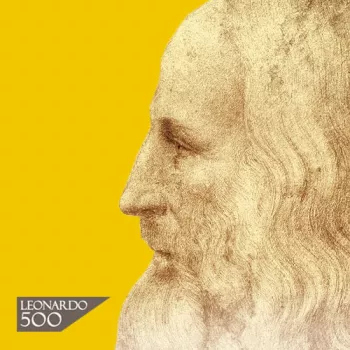The head of a youth c.1517-18
Black chalk | 19.3 x 14.9 cm (sheet of paper) | RCIN 912557
-
A drawing of the head and shoulders of a boy, his head turned in profile to the left. He has heavy regular features, and curly hair. Melzi's number 26.
Early in his career Leonardo fixed on two standard male types, who thereafter recur repeatedly in his drawings and paintings: an adolescent with refined features, and an older man with aquiline nose, prominent chin and beetling brow. In the last decade of his life he produced a number of independent drawings of such heads, exercises in form and draughtsmanship simply for his own satisfaction. Like many of Leonardo's bust-length studies, the shoulders of the youth here (clad in a low-cut gathered chemise) are turned in three-quarters view while his head remains in strict profile. The profile type is that of the Roman Emperor Nero transmitted to the Renaissance through coins and medals.
The delicacy of the black chalk suggests that this is one of Leonardo's latest drawings, executed during his final residence at the French court in the Loire valley. The contrast between the softly modelled surface and the emphatic outline destroys the illusion of three-dimensional form, draining the image to such a degree that it reads as flat pattern or low relief rather than a body in space. Attempts have consequently been made to relate drawings such as this to Leonardo's supposed activity as an engraver of gems and cameos in the antique manner. The principal evidence for this activity is a reference in Camillo Lunardi's Speculum lapidum (Venice, 1502) to a gem engraver called 'Leonardus mediolanensis' (Leonardo of Milan), a name by which Leonardo da Vinci seems never to have been known. Another possible mention of a carving in relief by Leonardo is in the poem Antiquarie prospettiche romane composte per prospectivo melanese dipinctore, a short compendium of the marvels of Rome, dedicated to Leonardo and probably written c.1496-98 (by an anonymous author who has been variously identified as Bramante, Bramantino or Bernardo Zenale). This includes two references to a work apparently by Leonardo, of a head with a fine neck and head of hair, though it is hard to understand exactly what the poet is describing and the object may not actually have existed. It is hazardous to conclude anything from these scanty indications.
Text adapted from M. Clayton, Leonardo da Vinci: The Divine and the Grotesque, London 2002Provenance
Bequeathed to Francesco Melzi; from whose heirs purchased by Pompeo Leoni, c.1582-90; Thomas Howard, 14th Earl of Arundel, by 1630; probably acquired by Charles II; Royal Collection by 1690
-
Creator(s)
Acquirer(s)
-
Medium and techniques
Black chalk
Measurements
19.3 x 14.9 cm (sheet of paper)
Object type(s)
Other number(s)
RL 12557Alternative title(s)
The head of a youth in profile










